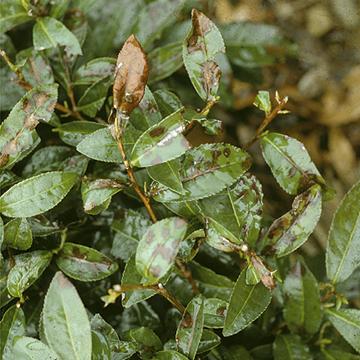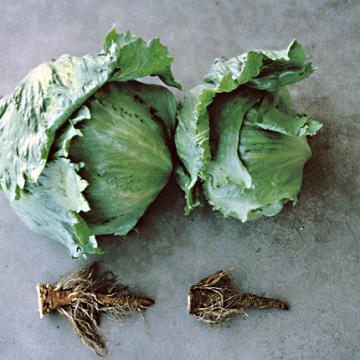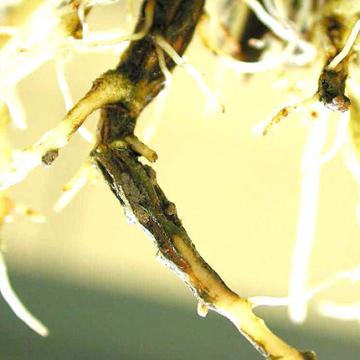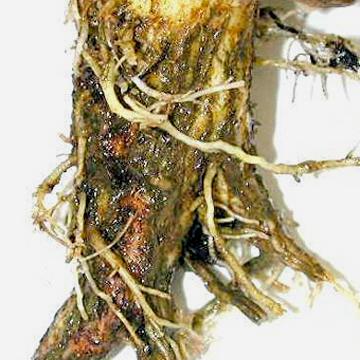DISEASE: Bacterial shoot blight
HOST: Tea
Leaves with reddish brown spots.

Bacterial shoot blight | Tea
DISEASE: Bacterial shoot blight
HOST: Tea (Camellia sinensis)
PATHOGEN: Pseudomonas syringae pv. theae
SOURCE: M. Goto
DISEASE: Corky root
HOST: Lettuce
Corky root causes a reduction in size of lettuce heads and root systems; susceptible cultivar (right) and resistant cultivar (left).

Corky root | Lettuce
DISEASE: Corky root
HOST: Lettuce (Lactuca sativa)
PATHOGEN: Sphingomonas suberifaciens
PATHOGEN SYNONYM: Rhizomonas suberifaciens
SOURCE: E. J. Ryder
DISEASE: Corky root
HOST: Lettuce
Close-up of root with malformed, corky appearance and longitudinal ridges of brown tissues.

Corky root | Lettuce
DISEASE: Corky root
HOST: Lettuce (Lactuca sativa)
PATHOGEN: Sphingomonas suberifaciens
PATHOGEN SYNONYM: Rhizomonas suberifaciens
SOURCE: A. van Bruggen
DISEASE: Corky root
HOST: Lettuce
Initial symptoms of disease are yellow lesions on taproot and main laterals. Greenish brown bands occur around roots. Root pith may become brown and hollow.
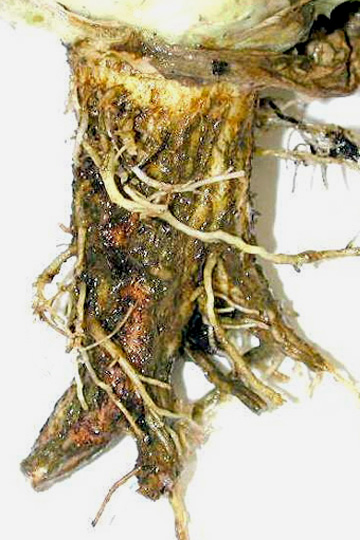
Corky root | Lettuce
DISEASE: Corky root
HOST: Lettuce (Lactuca sativa)
PATHOGEN: Sphingomonas suberifaciens
PATHOGEN SYNONYM: Rhizomonas suberifaciens
SOURCE: A. van Bruggen
DISEASE: Corky root
HOST: Lettuce
Differences in corky root symptoms between susceptible cultivar (right) and resistant cultivar (left).
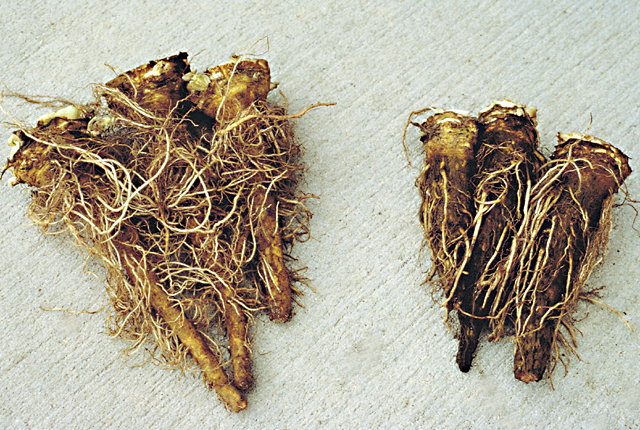
Corky root | Lettuce
DISEASE: Corky root
HOST: Lettuce (Lactuca sativa)
PATHOGEN: Sphingomonas suberifaciens
PATHOGEN SYNONYM: Rhizomonas suberifaciens
SOURCE: E. Ryder
DISEASE: Drippy gill
HOST: Mushroom
Drippy gill is characterized by small dark spots on gills with drops of bacterial ooze at the centers. Severe infection results in slimy areas and collapse of gills.

Drippy gill | Mushroom
DISEASE: Drippy gill
HOST: Mushroom (Agaricus campestris)
PATHOGEN: Pseudomonas agarici
SOURCE: J. Young
DISEASE: Drippy gill
HOST: Mushroom
Close-up of infected gills with bacterial ooze.

Drippy gill | Mushroom
DISEASE: Drippy gill
HOST: Mushroom (Agaricus campestris)
PATHOGEN: Pseudomonas agarici
SOURCE: J. Young


